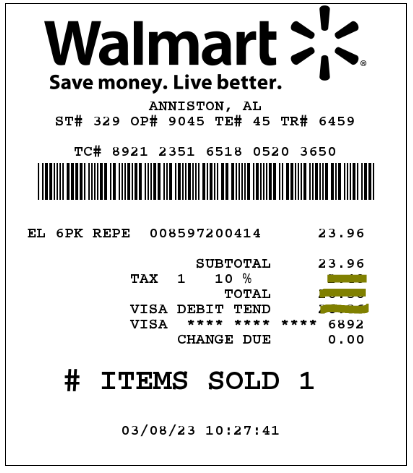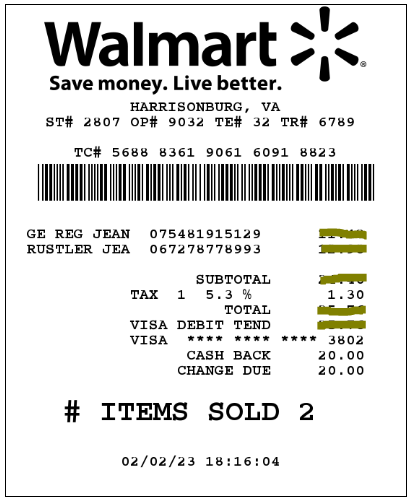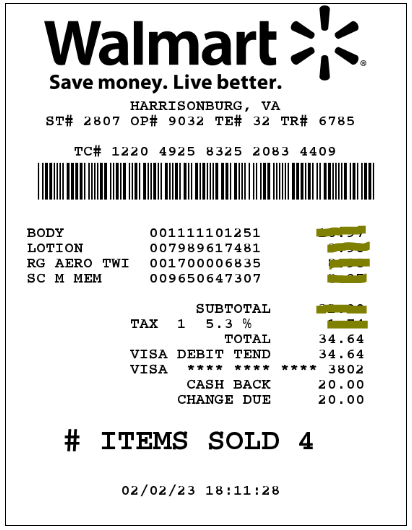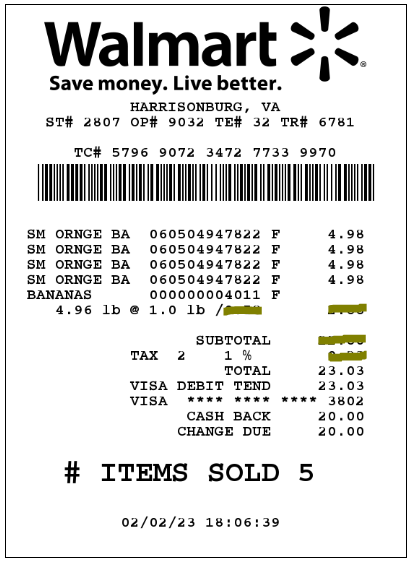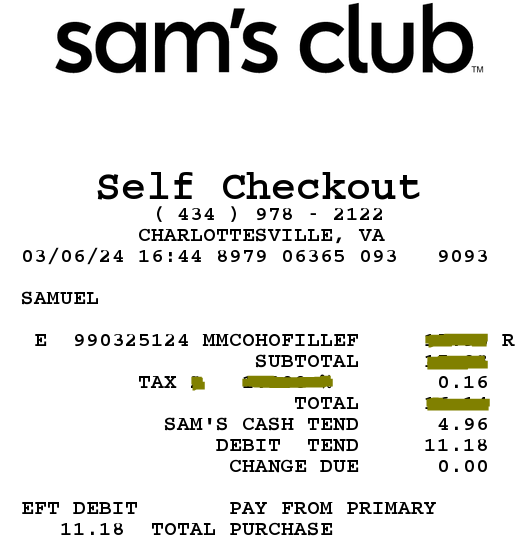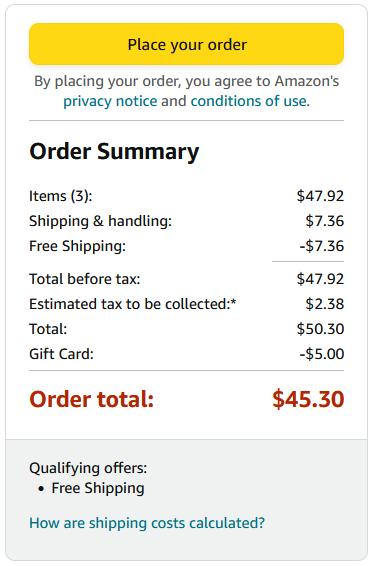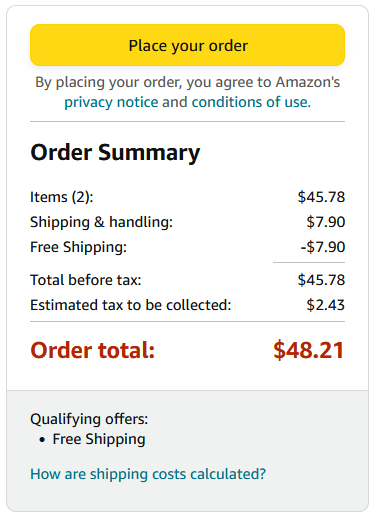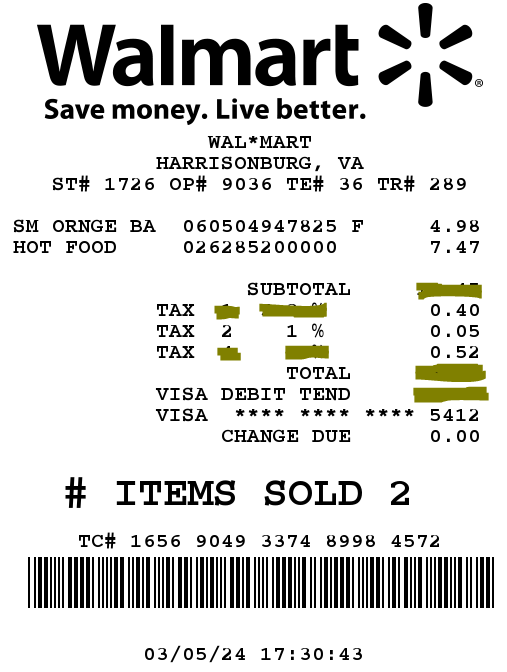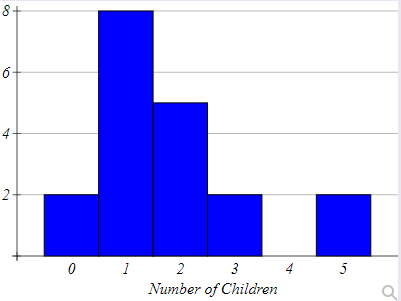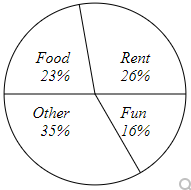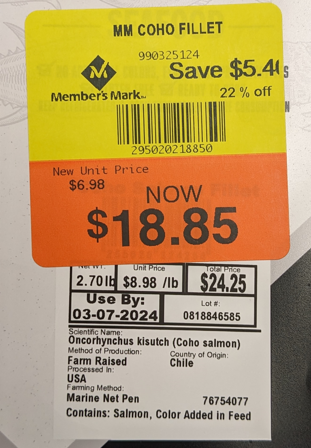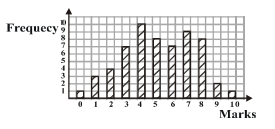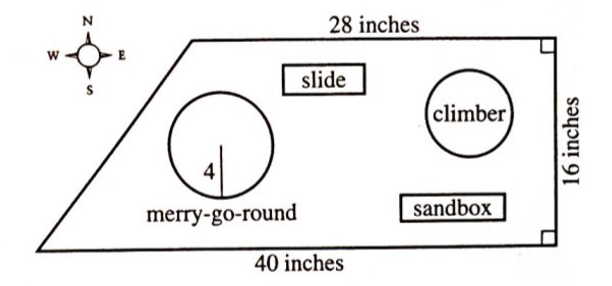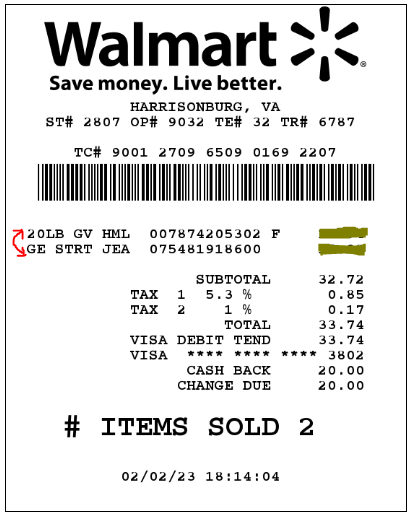(11.) ACT A shirt has a sale price of $30.40, which is 20% off the original price.
How much less than the original price is the sale price?
$ A.\:\: \$0.38 \\[3ex] B.\:\: \$1.52 \\[3ex] C.\:\: \$6.08 \\[3ex] D.\:\: \$7.60 \\[3ex] E.\:\: \$10.40 \\[3ex] $
We can do a basic part of this question in two ways.
Use any method you prefer.
$ Let\:\:the\:\:original\:\:price = x \\[3ex] \underline{First\:\:Method:\:\:Quantitative\:\:Literacy} \\[3ex] Discount = 20\%\:\:off \\[3ex] Remaining = 100\% - 20\% = 80\% \\[3ex] Exclude\:\:tax \\[3ex] 80\% \:\:of\:\:what\:\:is\:\: 30.40 \\[3ex] \dfrac{is}{of} = \dfrac{\%}{100}...Percent-Proportion \\[5ex] \dfrac{30.4}{x} = \dfrac{80}{100} \\[5ex] Cross\:\:Multiply \\[3ex] x * 80 = 30.4 * 100 \\[3ex] x = \dfrac{30.4 * 100}{80} \\[5ex] x = \dfrac{304}{8} \\[5ex] x = 38 \\[3ex] $ The original price = $\$38.00$
$ \underline{Second\:\:Method:\:\:Algebraic\:\:Thinking} \\[3ex] 20\%\:\:Discount = \dfrac{20}{100} * x \\[5ex] = 0.2 * x = 0.2x \\[3ex] Sale\:\:Price = Original\:\:Price - Discount \\[3ex] = x - 0.2x \\[3ex] = 0.8x \\[3ex] Sale\:\:Price = \$30.40 \\[3ex] \rightarrow 0.8x = 30.40 \\[3ex] x = \dfrac{30.40}{0.8} \\[5ex] x = 38 \\[3ex] x = \$38.00 \\[3ex] $ How much less than $\$38.00$ is $\$30.40$
$ Difference = 38.00 - 30.40 \\[3ex] Difference = \$7.60 $
How much less than the original price is the sale price?
$ A.\:\: \$0.38 \\[3ex] B.\:\: \$1.52 \\[3ex] C.\:\: \$6.08 \\[3ex] D.\:\: \$7.60 \\[3ex] E.\:\: \$10.40 \\[3ex] $
We can do a basic part of this question in two ways.
Use any method you prefer.
$ Let\:\:the\:\:original\:\:price = x \\[3ex] \underline{First\:\:Method:\:\:Quantitative\:\:Literacy} \\[3ex] Discount = 20\%\:\:off \\[3ex] Remaining = 100\% - 20\% = 80\% \\[3ex] Exclude\:\:tax \\[3ex] 80\% \:\:of\:\:what\:\:is\:\: 30.40 \\[3ex] \dfrac{is}{of} = \dfrac{\%}{100}...Percent-Proportion \\[5ex] \dfrac{30.4}{x} = \dfrac{80}{100} \\[5ex] Cross\:\:Multiply \\[3ex] x * 80 = 30.4 * 100 \\[3ex] x = \dfrac{30.4 * 100}{80} \\[5ex] x = \dfrac{304}{8} \\[5ex] x = 38 \\[3ex] $ The original price = $\$38.00$
$ \underline{Second\:\:Method:\:\:Algebraic\:\:Thinking} \\[3ex] 20\%\:\:Discount = \dfrac{20}{100} * x \\[5ex] = 0.2 * x = 0.2x \\[3ex] Sale\:\:Price = Original\:\:Price - Discount \\[3ex] = x - 0.2x \\[3ex] = 0.8x \\[3ex] Sale\:\:Price = \$30.40 \\[3ex] \rightarrow 0.8x = 30.40 \\[3ex] x = \dfrac{30.40}{0.8} \\[5ex] x = 38 \\[3ex] x = \$38.00 \\[3ex] $ How much less than $\$38.00$ is $\$30.40$
$ Difference = 38.00 - 30.40 \\[3ex] Difference = \$7.60 $
(12.) Case 0: What Item?
SamDom4Peace did not pay a sales tax in one of the items.
Identify the item.
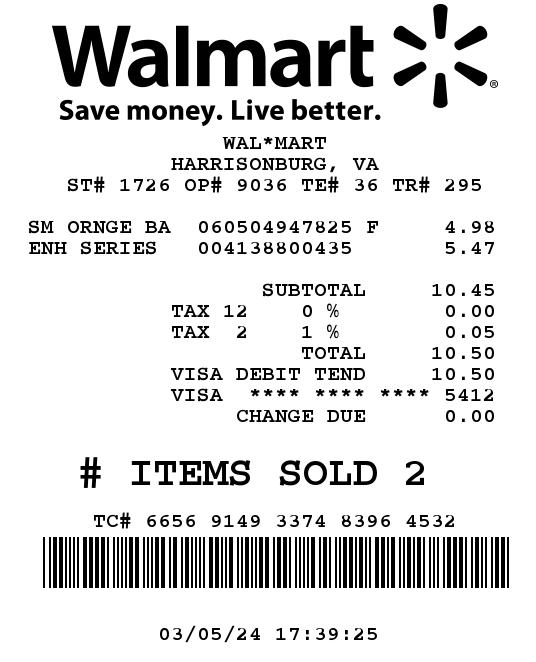
Let:
SM ORNGE BA = Item 1
ENH SERIES = Item 1
There are two items but only 1 tax rate of 1%
Let us find the tax amount of 1% tax for each item
$ 1\% = \dfrac{1}{100} = 0.01 \\[5ex] \underline{Item\;1} \\[3ex] Cost = 4.98 \\[3ex] Tax = 0.01(4.98) \\[3ex] = 0.0498 \\[3ex] \approx \$0.05 \\[5ex] \underline{Item\;2} \\[3ex] Cost = 5.47 \\[3ex] Tax = 0.01(5.47) \\[3ex] = 0.0547 \\[3ex] \approx \$0.05 \\[3ex] $ As we can see, the tax amount is approximately the same for both items.
So, how can we figure out the item?
Note the responses of your students.
Advise them accordingly.
SamDom4Peace did not pay a sales tax in one of the items.
Identify the item.

Let:
SM ORNGE BA = Item 1
ENH SERIES = Item 1
There are two items but only 1 tax rate of 1%
Let us find the tax amount of 1% tax for each item
$ 1\% = \dfrac{1}{100} = 0.01 \\[5ex] \underline{Item\;1} \\[3ex] Cost = 4.98 \\[3ex] Tax = 0.01(4.98) \\[3ex] = 0.0498 \\[3ex] \approx \$0.05 \\[5ex] \underline{Item\;2} \\[3ex] Cost = 5.47 \\[3ex] Tax = 0.01(5.47) \\[3ex] = 0.0547 \\[3ex] \approx \$0.05 \\[3ex] $ As we can see, the tax amount is approximately the same for both items.
So, how can we figure out the item?
Note the responses of your students.
Advise them accordingly.
